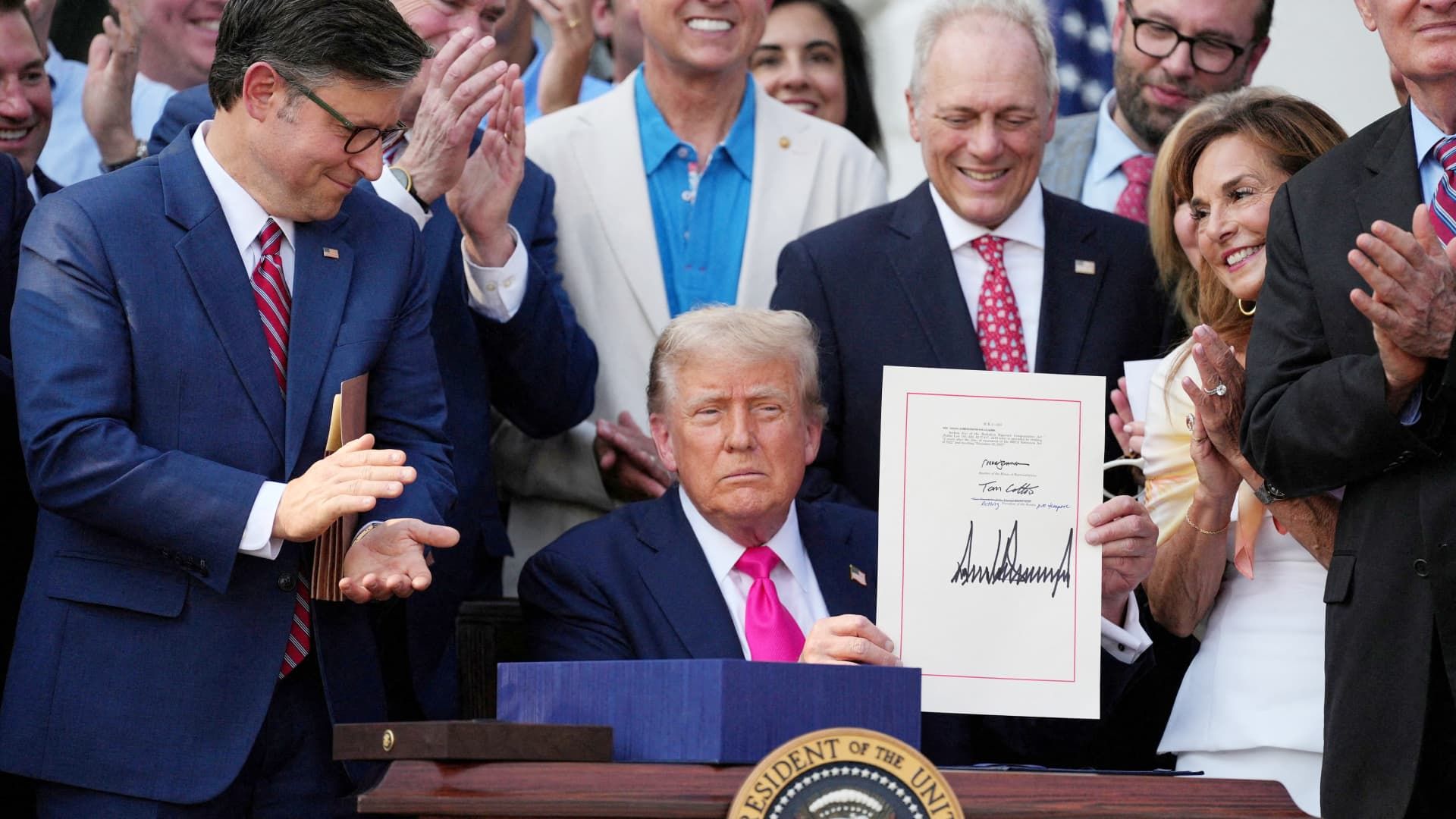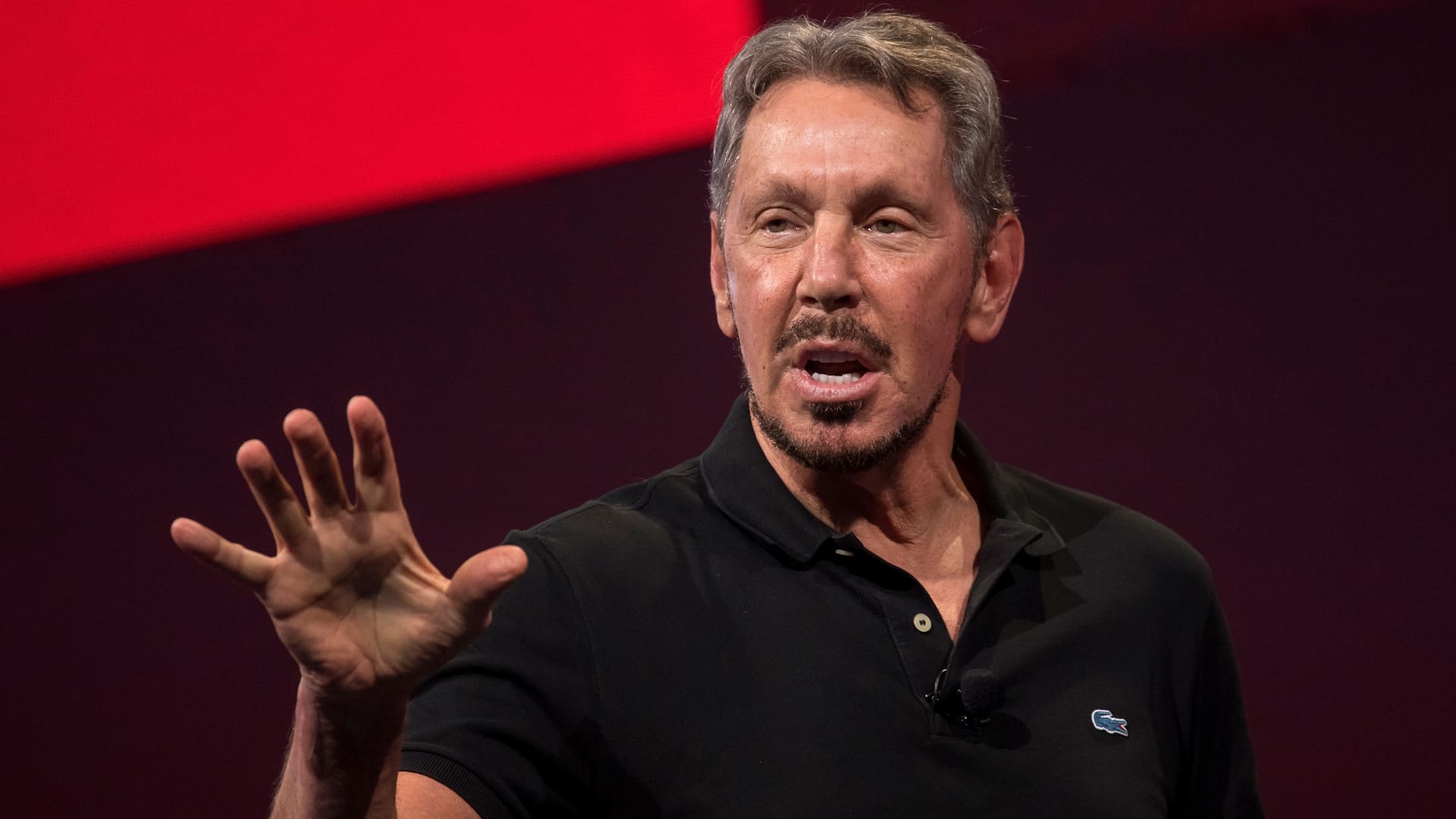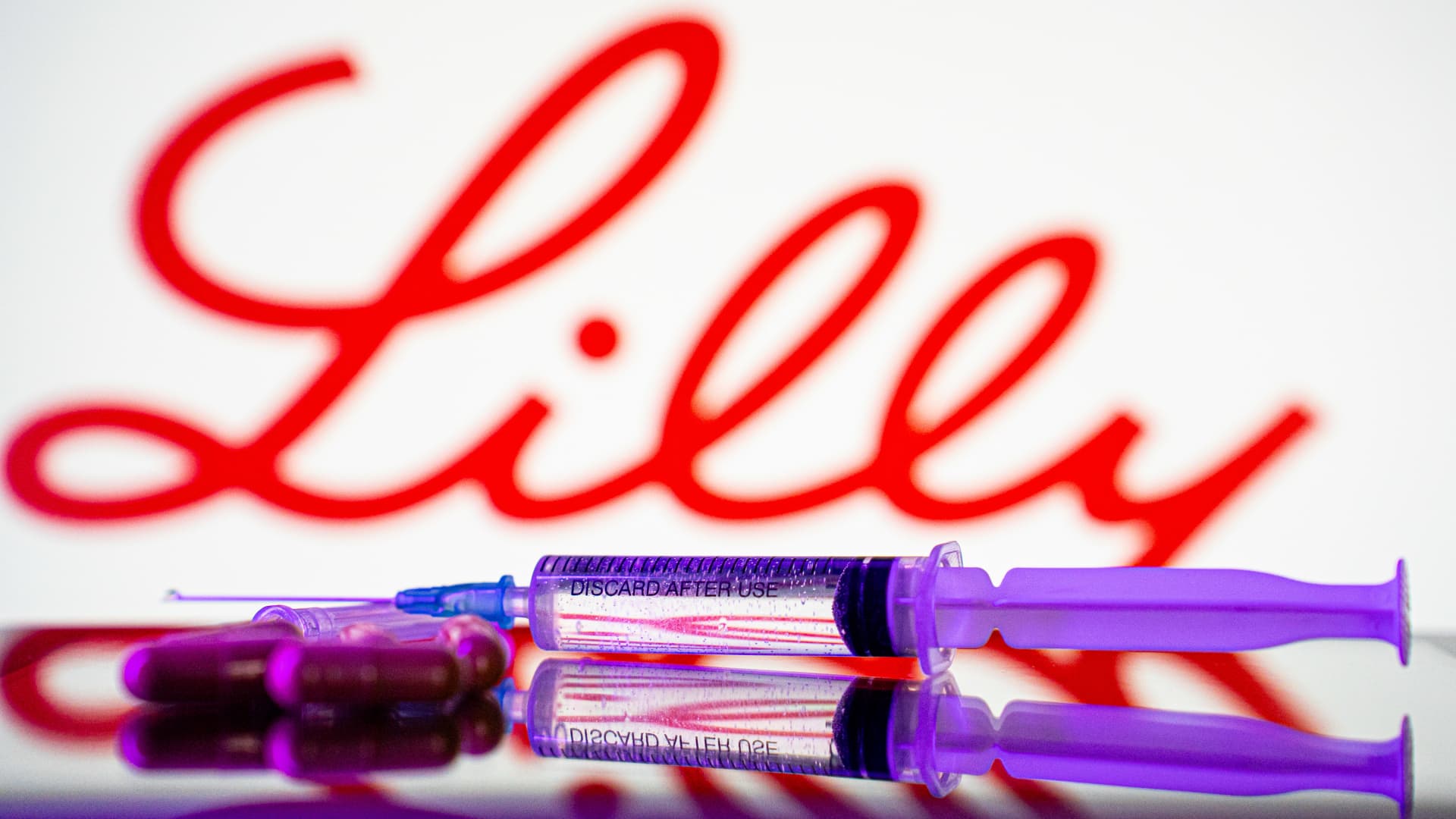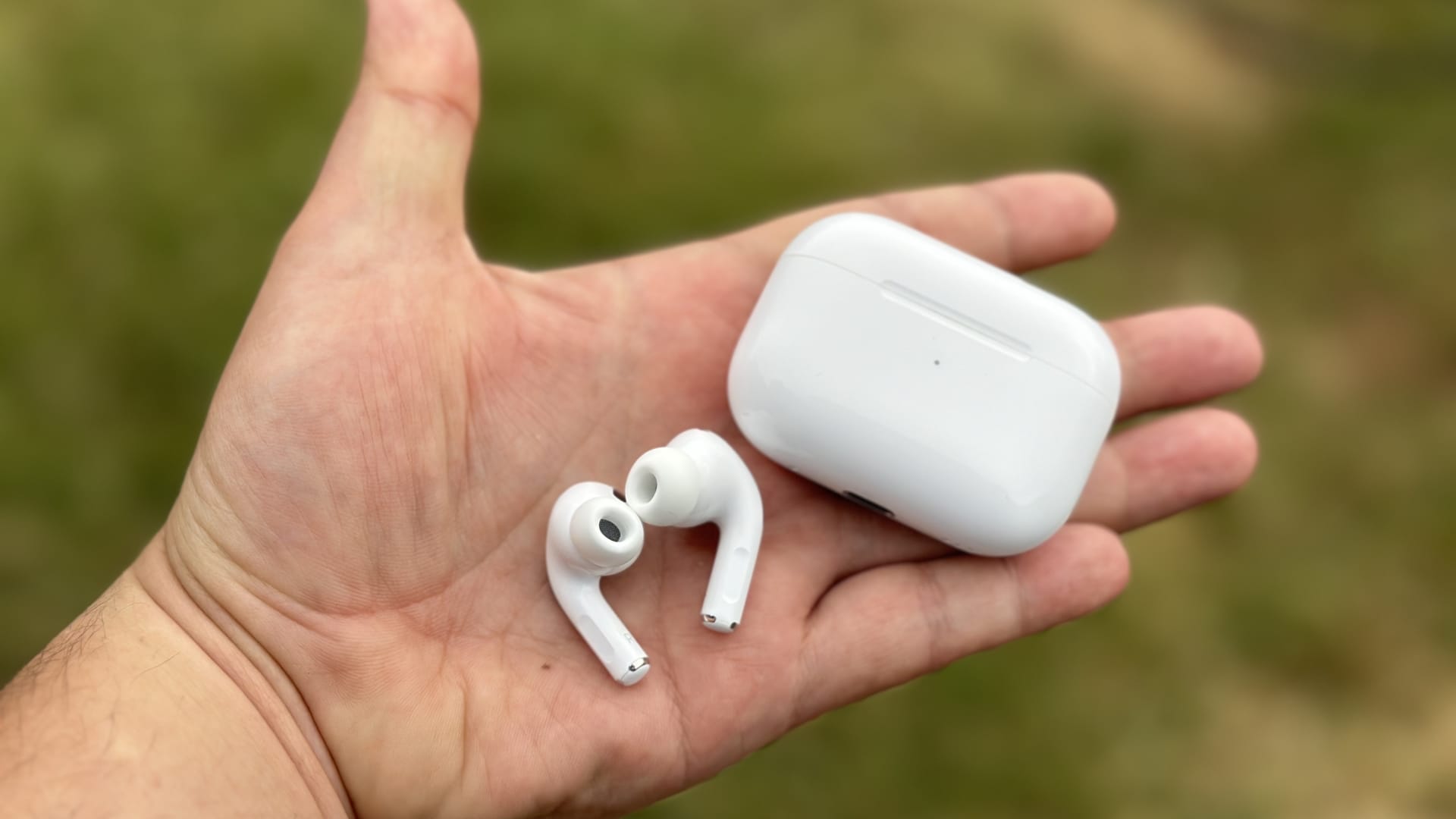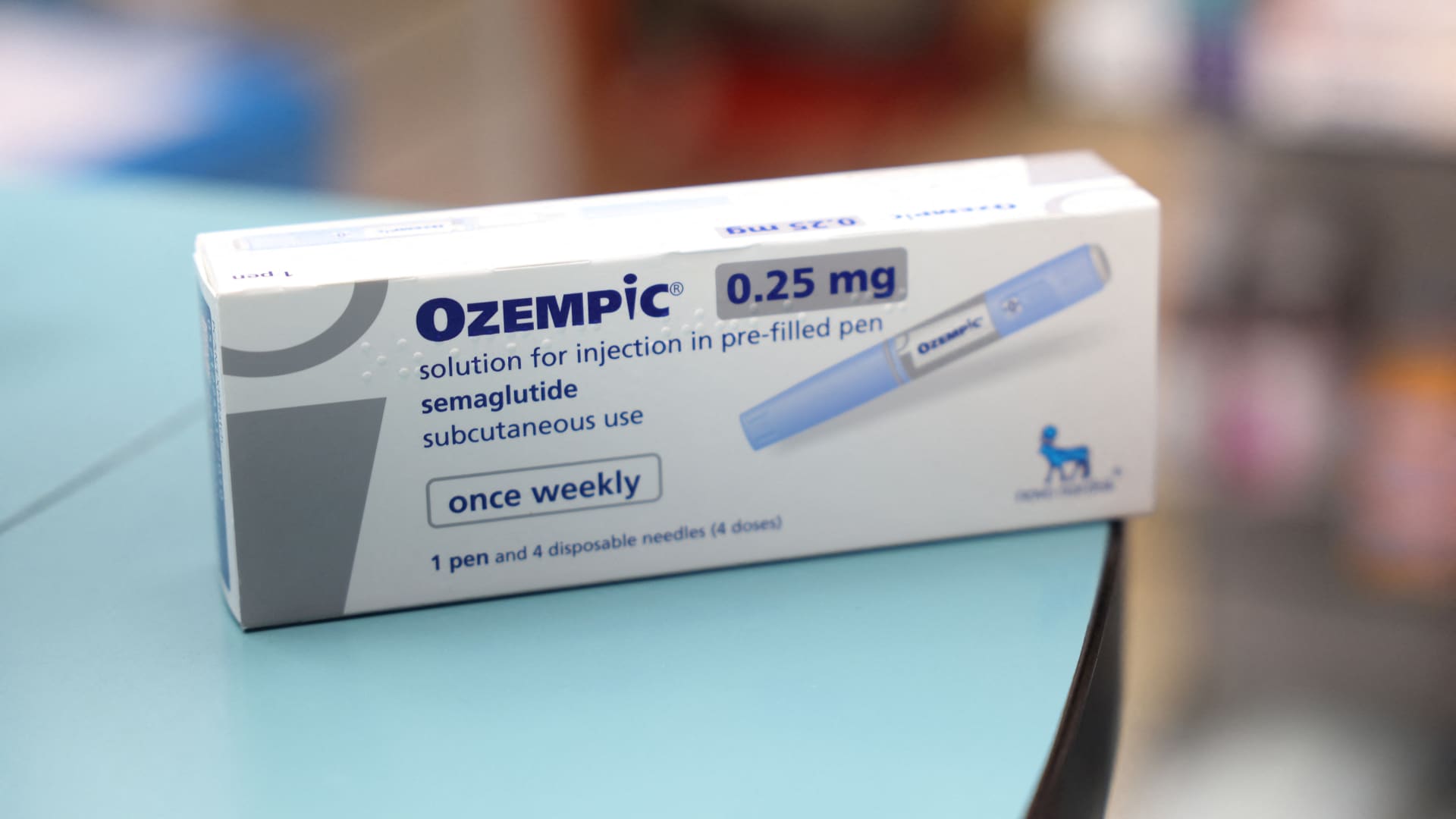The president of the United States, Donald Trump, presents a broad legislation of expenses and prosecutors, known as the “Law of a Big Big Beautiful bill”, after he signed it, in the White House in Washington, DC, USA, UU., July 4, 2025.
Leah Millis | Reuters
A version of this article appeared for the first time in the Healthy Bulletin returns from CNBC, which brings the latest medical care news directly to its entrance tray. Subscribe here To receive future editions.
We return from the holiday with President Donald Trump's “big” bill was officially promulgated.
Its tax cut package and historical expenses includes more than $ 1 billion cuts to Medicaid, which will leave millions of vulnerable Americans without medical insurance and threaten hospitals and centers that give them attention. While medical care expenses reductions will have massive human costs, they will also affect the pharmaceutical industry.
Medicaid only represents a part of the income of many medications in the United States, and an even less part of their total income worldwide. Medicaid also reimburses companies for drugs at lower rates than those of other programs such as Medicare or Commercial Insurance, according to a Monday note of the Readink Partners David Risinger analyst.
That is largely due to a program that requires medication manufacturers to provide reimbursements to states in exchange for the medical coverage of their medications, resulting in lower net prices.
Even so, Risinger said that “the future loss of income is a marginal negative” for drug manufacturers.
He also said that the sales of some companies are more exposed to the Medicaid market than others, depending on the company's previous comments and the internal estimates of their company.
Pharmaceutical vertices and Head Trust more in Medicaid than in other pharmaceutical companies of great capitalization, said Risinger. Medicaid represents 25% of the US revenues of vertex and 22% of Gilead's national sales, according to the note.
VERTEX revealed at a conference in June that Medicaid represents 23% of the sales of their cystic fibrosis medications, which are the company's key income drivers. That track: half of all children and a third of all adults with that genetic condition depend on Medicaid to pay the treatments and attention they need to live a healthy life, according to the foundation of cystic fibrosis.
Gilead's headquarters in Foster City, California, USA, on Monday, January 29, 2024.
David Paul Morris | Bloomberg | Getty images
Medicaid also plays an important role in the prevention and treatment of HIV, especially for unattended populations, which is a central approach to Gilead. For example, the company's HIV treatment pill, Biktarvy, was classified the second highest in terms of total medicaid drugs in 2022, and remained one of the most used medications in the program in 2024, according to a note from Jefferies analysts in March.
Even so, analysts said that Gilead's success will probably take from Medicaid's cuts would be “manageable.” The note was based on estimates of an earlier version of the bill.
Commercial insurers also provide most coverage for HIV prevention and continuous treatment, while Medicaid plays a little smaller, although still. Important, paper.
Medicaid represents 12% of Johnson and JohnsonNational sales (excluding their medical device business) and 12% of Novo NordiskAmerican income. Among the main pharmaceutical companies, Bristol Myers Squibb and Pfizer He had the lowest exposure, with only 4% of his US income from Medicaid, each.
Risinger said Medicaid represents 15% of RocheAmerican income. But Roche in a statement on Tuesday said the market only represents less than 10% of sales in the country.
Risinger said that significant cuts will not occur in Medicaid until after the mid -November 2026 elections, so any financial impact for medication manufacturers will begin essentially in 2027.
There is also a more important victory for drug manufacturers in Trump's bill to take into account: a provision that will exempt more medications from Medicare medication price negotiations of the inflation reduction law.
We will continue to monitor the impact of legislation on the industry, so be attentive.
Do not hesitate to send any advice, suggestion, stories ideas and data to Annika in [email protected].
The latest in medical care technology: new AI companies have achieved most digital health funds so far this year
We are halfway until 2025, which means that we have some fresh digital health financing data to review. Even in a macroeconomic and volatile political environment, the sector saw “a strong impulse,” according to a new rock health report.
Digital Health Companies in the United States received $ 6.4 billion in funds in the first half of the year, compared to $ 6 billion in the same period last year and $ 6.2 billion in the first half of 2023, according to the report. The sector raised $ 3.4 billion in risk funds only in the second quarter, substantially from the average of $ 2.6 billion per quarter since 2023.
Startups that use artificial intelligence as a central part of their product raised 62% of all digital health risk during the first half of the year, the first time that companies enabled for the AI have captured the majority of the new capital. These businesses obtained an average of $ 34.4 million per round.
“Digital health is demonstrating that it is more than stable and resistant; the sector is entering a new traction and impact phase, with the playing paper,” said Rock Health.
But while the financing is updated, the offers count has dropped slightly. Digital health companies closed 245 agreements in the first half of the year, while closed 273 in the same period last year, according to the report. Even so, megadeals, or increase above $ 100 million, are increasing. There were 11 megadeales in the first half of the year, which is in pace to spend the 17 megadeales that took place in all 2024.
There has also been a lot of mergers and acquisition activity within digital health this year. The sector closed 107 M&A agreements in the first half of 2025, which could quickly exceed the 121 Total M&A agreements that closed in 2024.
And, for relief from many digital health investors, Hinge Health and Votes Health made the leap and debuted in public markets. Rock Health said that these exits were undeniably “the moments of 2025 so far.”
“These public market debuts have provided investors a very necessary redemption after an exit drought, difficult public market performances and a series of privately privately taken recent ones,” said Rock Health.
Read the full report here.
Do not hesitate to send any advice, suggestion, stories ideas and data to Ashley at [email protected].

